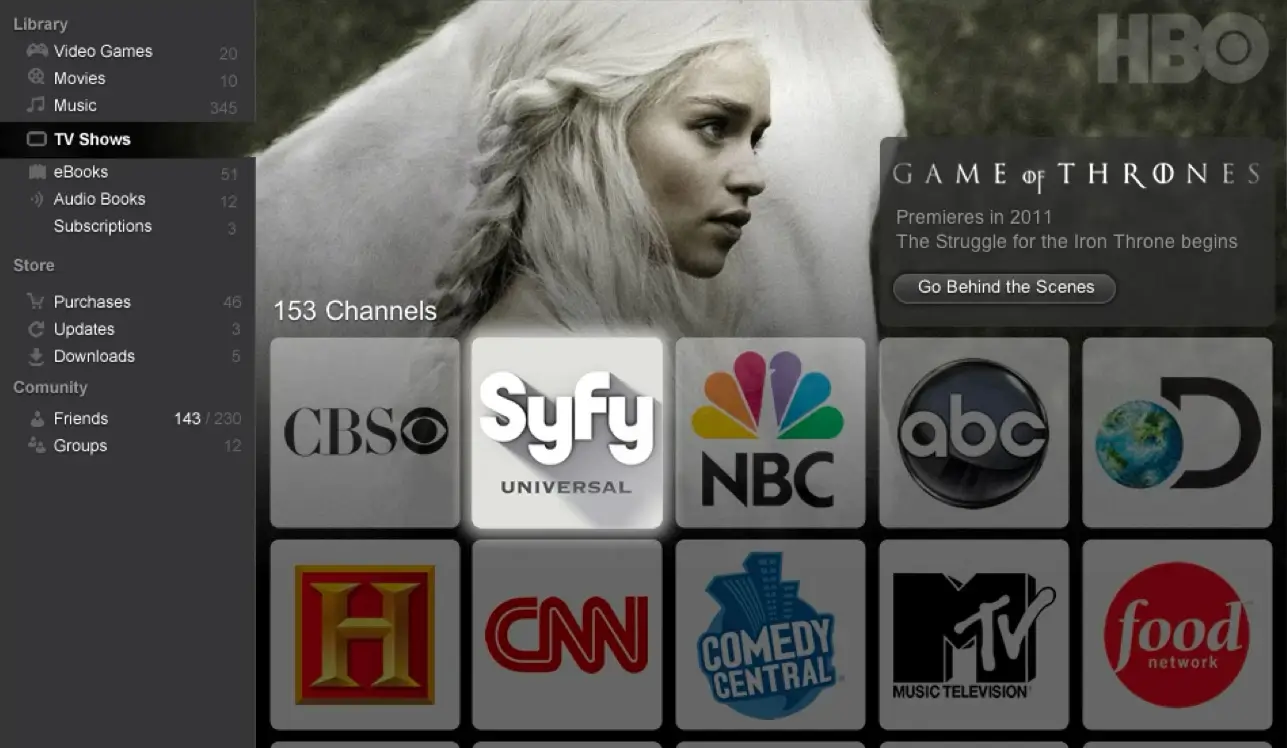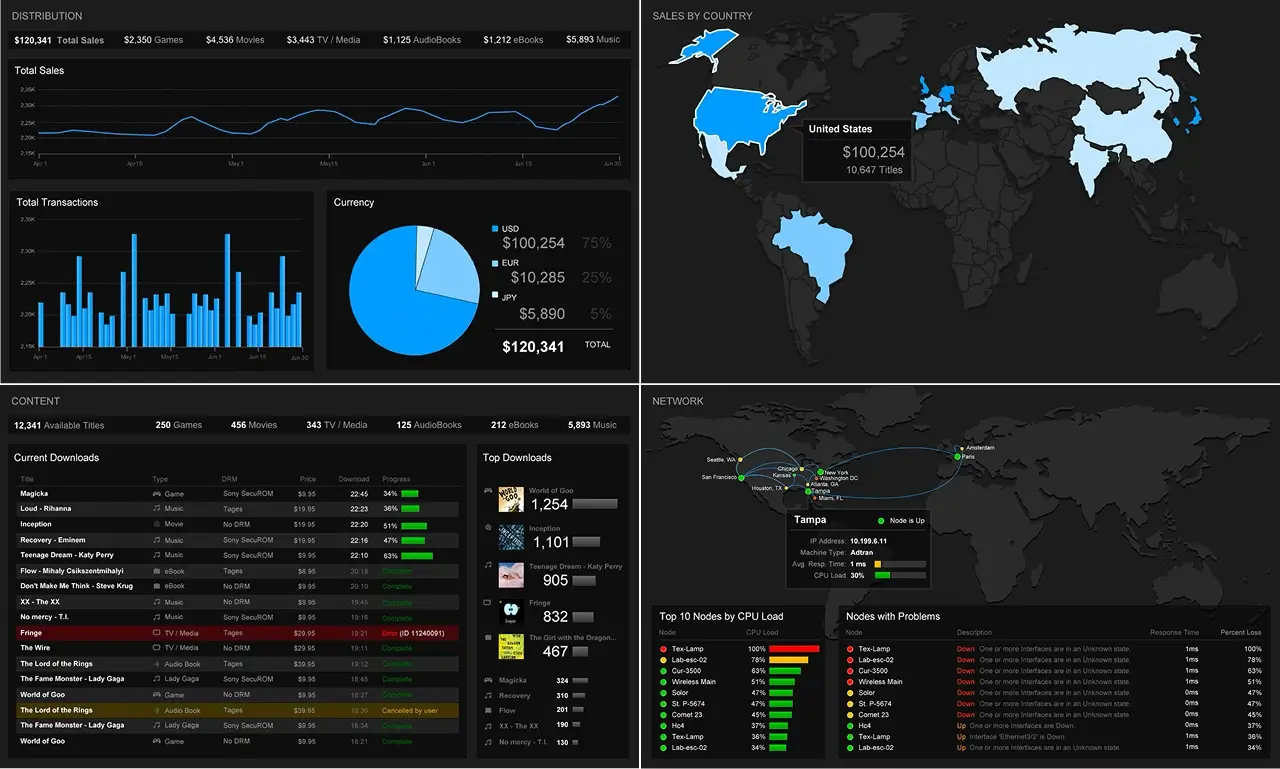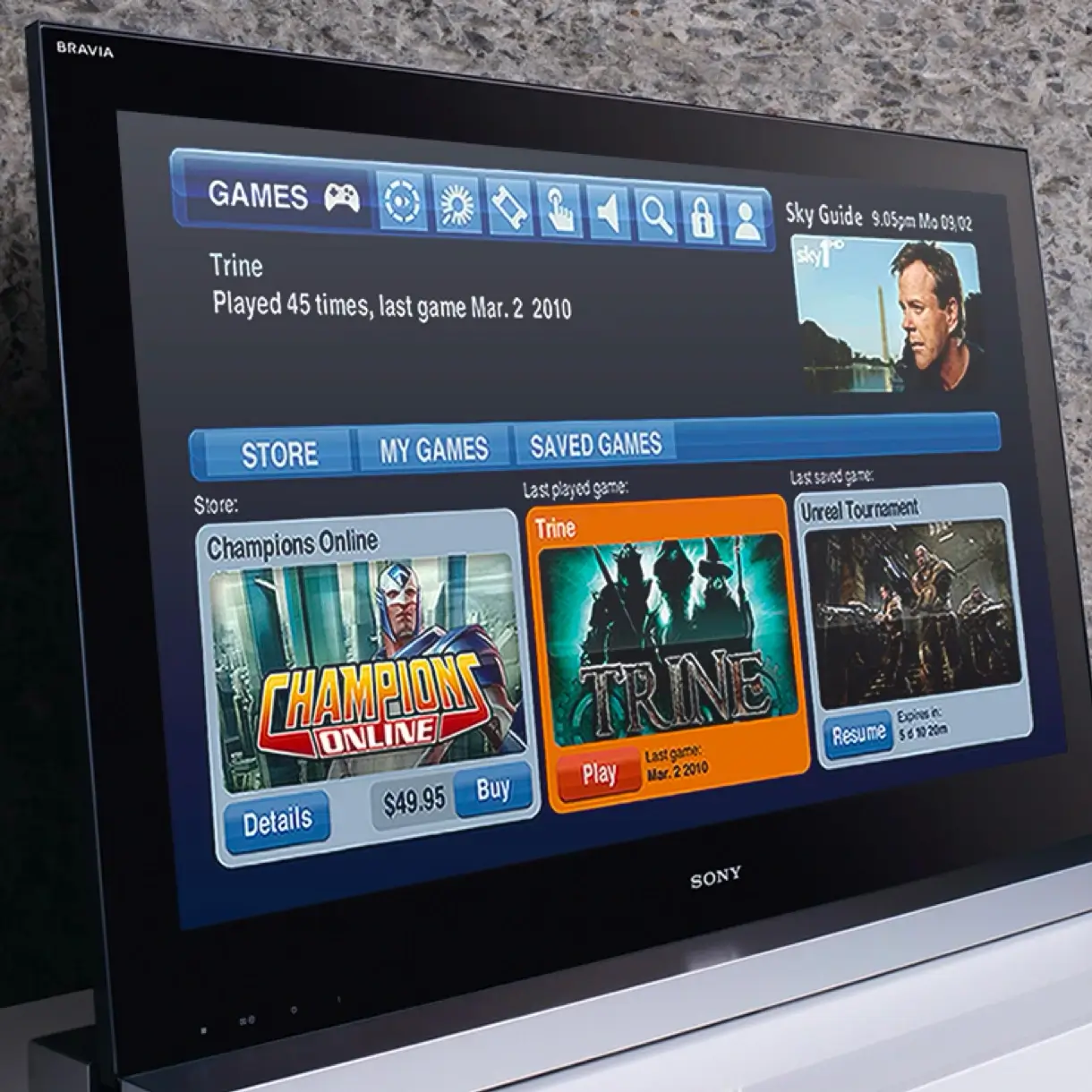Guindo Design
Strategic Digital Product Design
GameStreamer
Designing the experience of a global digital game distribution platform
In 2009, digital game distribution was undergoing major transformation. Steam was already setting the standard, but there was still room for new approaches. GameStreamer was born with an ambitious idea: to build a white-label digital distribution platform that would allow publishers and media companies to launch their own online game stores and reach audiences directly, combining catalog, customization, e-commerce and streaming experiences in a single solution.

Desktop version of the GameStreamer Player
More than a digital store
GameStreamer was not limited to offering a game catalog. The solution included the ability to customize online stores for each partner, integrate social features, and explore the future of streaming across multiple devices and contexts. One of our most memorable demos was presented at CES in Las Vegas, where car passengers were able to play on built-in screens during a ride. These kinds of experiences showcased the potential of the platform to take gaming far beyond the desktop.

GameStreamer booth at CES 2010
We also developed monitoring dashboards so partners could manage traffic, performance, and activity in real time. The platform was designed to work as a complete ecosystem, capable of adapting both to global brands and indie studios.

Monitoring dashboards for the platform
Leading the user experience
For nearly two years we led the definition of the user experience across all of the company’s products and services. Our work ranged from information architecture and user flows to the creation of modular interfaces that could scale and be personalized without losing consistency.
We also coordinated a design team that had to quickly deliver a large number of customized demos, which were essential for the commercial strategy. At the same time, we collaborated with development teams based in Paris and Moscow, as well as the headquarters in Tampa. The time zone differences often turned the workdays into true marathons.
Achievements and challenges
In just a couple of years, we managed to integrate over 2,000 games from more than 200 publishers and launch more than ten white-label stores across different markets. We succeeded in building a scalable system that allowed each partner to offer a differentiated shopping experience while always keeping it simple for the end user.
The design of the platform was key to conveying trust, clarity, and value, both in live user experiences and in commercial demos that opened new business opportunities.

GameStreamer Player for TV
However, the business challenges proved insurmountable. Securing licenses for top titles required multi-million-dollar investments that eroded the project’s viability. Network infrastructure costs grew exponentially as we tried to deliver high-quality streaming services. And most difficult of all: convincing gamers to leave Steam, which not only had a consolidated ecosystem, but could also afford aggressive pricing thanks to the margins of distributing its own games. Despite the vision and effort, differentiation was not enough.
Impact and learning
GameStreamer was a pioneering initiative that explored paths that today are part of the standard in game distribution: store customization, community integration, streaming services, and cross-platform experiences.
Leading the user experience on this project allowed us to develop critical skills that apply to any digital product.